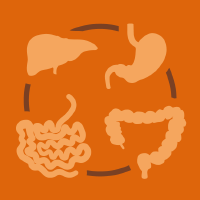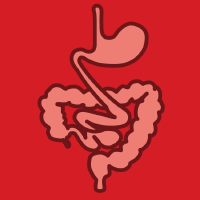Topic Menu
► Topic MenuTopic Editors

Gut Microbiota in Human Health
Topic Information
Dear Colleagues,
Gut microbiota, together with their bioactive products, have been recognized as key modulators in the development of many diseases. The status of intestinal bacteria, fungi and even viruses is closely associated with organ homeostasis in humans. For example, regarding the “gut-liver axis”, the crosstalk (e.g., enterohepatic circulation of bile acid; microbial product metabolism through the portal vein) between the gut and liver facilitates the interplay between enteric eubiosis and liver diseases. Similarly, recent evidence suggests intestinal microbiota can regulate brain, lung, heart, muscle and joint function either directly or indirectly in different disease contexts. The gut ecosystem is influenced by many endogenic and exogenic factors, including gut and systemic inflammatory conditions, diet and nutritional status, aging, psychological stress, etc. Thus, research exploring the relationships among gut microbiota, nutrition, lifestyle and organ damage is needed. The current Special Issue welcomes basic or clinic studies investigating human physiological or pathological alterations and gut microbiota through human research or preclinical animal models. Reviews are also welcome.
Prof. Dr. Peng Chen
Prof. Dr. Xingyin Liu
Prof. Dr. Wenke Feng
Topic Editors
Keywords
- gut microbiota
- diseases
- nutrition
- lifestyle
- inflammation
Participating Journals
| Journal Name | Impact Factor | CiteScore | Launched Year | First Decision (median) | APC |
|---|---|---|---|---|---|

Gastroenterology Insights
|
2.9 | 2.7 | 2009 | 32.6 Days | CHF 1600 |

Gastrointestinal Disorders
|
0.7 | 1.8 | 2019 | 21.3 Days | CHF 1200 |

Journal of Clinical Medicine
|
3.9 | 5.4 | 2012 | 17.9 Days | CHF 2600 |

Microorganisms
|
4.5 | 6.4 | 2013 | 15.1 Days | CHF 2700 |

Nutrients
|
5.9 | 9.0 | 2009 | 14.5 Days | CHF 2900 |

MDPI Topics is cooperating with Preprints.org and has built a direct connection between MDPI journals and Preprints.org. Authors are encouraged to enjoy the benefits by posting a preprint at Preprints.org prior to publication:
- Immediately share your ideas ahead of publication and establish your research priority;
- Protect your idea from being stolen with this time-stamped preprint article;
- Enhance the exposure and impact of your research;
- Receive feedback from your peers in advance;
- Have it indexed in Web of Science (Preprint Citation Index), Google Scholar, Crossref, SHARE, PrePubMed, Scilit and Europe PMC.

